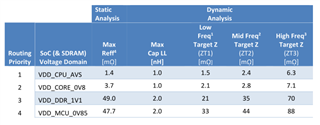Other Parts Discussed in Thread: SK-AM69
Tool/software:
Hi Sir,
I have a question regarding the TI AM69A EVM PROC154E3_RP circuit.
I noticed that many capacitors like the NFM15HC105D0G, NFM18HC106D0G, NFM21PC474R1C3D are used in the design.
Could you please explain the purpose of these capacitors? Is it possible to replace them with regular capacitors?
Thank you.
Best regards,
Gary Yu


